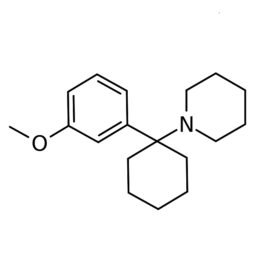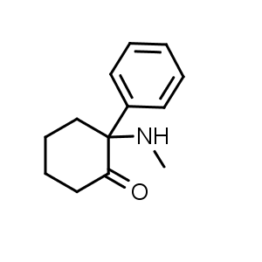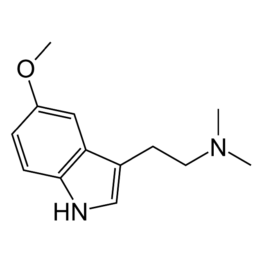Description
As a novel psychoactive substances, N-ethyl deschloroketamine (2-Oxo-PCE, O-PCE) emerges as a compound of growing interest and exploration. This derivative of ketamine offers unique pharmacological properties that have piqued the curiosity of researchers and enthusiasts alike. Let’s embark on a comprehensive journey into the world of DNEK, unraveling its origins, pharmacology, potential uses, and associated considerations.
Understanding N-Ethyl Deschloroketamine (2-Oxo-PCE, O-PCE)
N-ethyl deschloroketamine, also known as 2-(ethylamino)-2-(3-methoxyphenyl) cyclohexanone, or (2-Oxo-PCE, O-PCE) is a structural analog of ketamine, a dissociative anesthetic and hallucinogenic substance. Chemically, it is characterized by the absence of a chlorine atom at the 2-position on the phenyl ring of the ketamine molecule, along with the addition of an ethyl group. This modification alters its pharmacokinetic and pharmacodynamic properties, influencing its interaction with neurotransmitter systems in the brain.
Pharmacological Mechanisms
Research suggests that N-ethyl deschloroketamine primarily acts as a noncompetitive NMDA receptor antagonist, similar to ketamine. By blocking the activity of N-methyl-D-aspartate (NMDA) receptors, it modulates glutamatergic neurotransmission, leading to dissociative, anesthetic, and hallucinogenic effects. Additionally, DNEK exhibits affinity for other receptors, including serotonin and opioid receptors, contributing to its complex pharmacological profile.
Recreational Use and Effects
The recreational use of N-ethyl deschloroketamine has gained traction among individuals seeking novel psychoactive experiences. Users report a range of effects, including dissociation from reality, sensory distortions, altered perception of time and space, and profound introspective experiences. Some describe N-ethyl deschloroketamine’s effects as similar to those of ketamine, albeit with subtle differences in duration, intensity, and subjective qualities.
Therapeutic Potential
While primarily explored for its recreational effects, N-ethyl deschloroketamine has also attracted interest from researchers investigating its potential therapeutic applications. Preliminary studies suggest that it may have utility in the treatment of mood disorders, such as depression and anxiety, as well as chronic pain conditions. Its ability to induce dissociative states and modulate glutamatergic neurotransmission offers promise for addressing underlying neurochemical imbalances and enhancing psychological resilience.
Safety Considerations and Risks
Despite its potential benefits, the use of N-ethyl deschloroketamine is not without risks. Like other dissociative substances, it can induce adverse effects such as dissociation, confusion, agitation, hallucinations, and impaired motor function. Prolonged or excessive use may also lead to psychological dependence, tolerance, and withdrawal symptoms upon discontinuation. Furthermore, the purity and potency of N-ethyl deschloroketamine obtained from illicit sources may vary, increasing the risk of unintended consequences and harm.
Legal Status and Regulation in USA and Canada
The legal status of N-ethyl deschloroketamine varies across different jurisdictions. While it remains unregulated in some countries, others have classified it as a controlled substance due to its psychoactive effects and potential for misuse. Regulatory measures aim to control its availability and minimize associated risks, but enforcement and compliance present ongoing challenges in the context of global drug policy.
Conclusion: Navigating the Frontier
In conclusion, deschloro-N-ethyl-ketamine or 2-Oxo-PCE or O-PCE represents a frontier in the landscape of novel psychoactive substances, offering a glimpse into the complexities of neuropharmacology and human consciousness. Its unique pharmacological properties, combined with its potential therapeutic applications, underscore the need for further research and exploration. However, caution must be exercised to mitigate associated risks and ensure responsible use. As our understanding of 2-Oxo-PCE continues to evolve, informed decision-making and harm reduction strategies will remain essential in navigating the frontier of psychoactive exploration.














Reviews
There are no reviews yet.